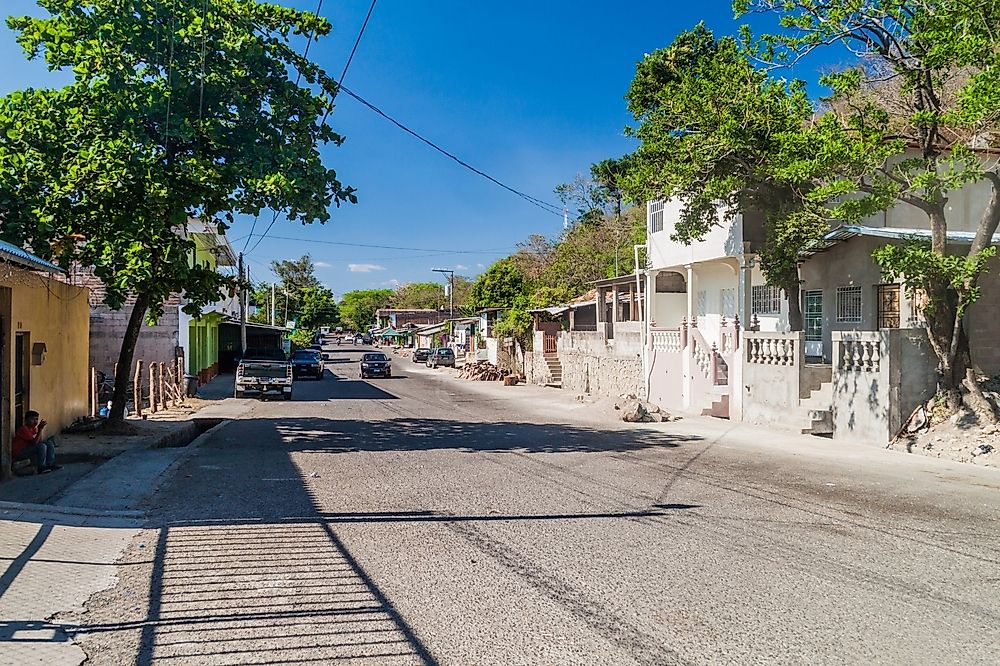Which Countries Border El Salvador?

El Salvador is a small country found in Central America. The country covers an area of 8,124 square miles and it has a land border spanning 339 miles. There two countries bordering El Salvador are Guatemala and Honduras. The Pacific Ocean limits the country to the south with its coastline stretching 191 miles. The border was established after El Salvador proclaimed independence and left the Federal Republic of Central America in the 19th Century soon after gaining independence from the Spanish Empire.
The Central American country was originally part of the Federal Republic of Central America, a federation that brought together El Salvador and the nearby countries of Nicaragua, Costa Rica, Honduras, and Guatemala. The federation was established immediately after independence from the First Mexican Empire in July 1823, and two years after gaining independence from the Spanish Empire in 1821. The Federation disintegrated after El Salvador declared independence and became a republic in 1841. The end of the Federal Republic of Central America saw the establishment of the international border delimiting El Salvador and Honduras whose delineation was done in 1856.
Guatemala
El Salvador is bordered by Guatemala to the west, a country with which it shares a long land border. The border between the two countries stretches 126 miles in length and is the shorter of El Salvador’s two land borders. The tripoint connecting Honduras, Guatemala, and El Salvador represents the start of the border, from where it moves on a southwards direction until finally meeting the Pacific Ocean. The border touches the departments of Santa Ana and Ahuachapan in El Salvador and the Jutiapa department in Guatemala. The border was established after the disintegration of the Federal Republic of Central America in 1841.
The bordering countries are culturally and historically intertwined with Guatemala being home to over 0.111 million El Salvadorians, more than in any other foreign country besides the United States. Guatemala is also El Salvador’s important trading partner, being the source of 8.2% of El Salvador’s imports. One of the dominant geological features found on the border is the Chingo volcano, a mountain whose summit towers 5,823 feet in elevation.
Border Crossings
The San Cristobal crossing is the busiest of the border crossings on the international border since it is situated on the Pan-American Highway. Other border crossings on the El Salvador-Guatemala border include the La Hachadura-Ciudad, the Valle-Nuevo, the Pedro de Alvarado, and the Anguiatu crossings. The US Government supported infrastructural developments on the international border. The developments are aimed at improving border security and facilitating trade between the bordering nations.
Honduras
Honduras is situated north of El Salvador and is one of the two countries with which El Salvador shares a land border. The border delimiting the two countries is the longest international that El Salvador shares with any other country, stretching a total of 159 miles in length. The border starts at the tripoint connecting Honduras, El Salvador, and Guatemala from where it moves in an eastward direction and later southwards until finally ending at the Golfo de Fonseca. There are five departments of Honduras alongside which the border runs and these are Intibuca, Valle, Ocotepeque, La Paz, and Lempira. On El Salvador’s side, the border runs along five departments; San Miguel, Chalatenango, La Union, Cabanas, and Morazan.
Border Crossings
The El Amatillo border crossing is one of the two found on the El Salvador-Honduras international border. Situated on the Goascoran River, the border crossing is manned by immigration and customs officials from the two countries. Therefore, one is required to be in possession of the required documents to go through the El Amatillo border crossing. These documents include registration certificates, passports, or import permits. Tourists are required to part with a small fee while entering either side of the border (usually about $3). Another border crossing found on the border is the El Poy crossing which is situated in the border town of the same name. As is the case on the El Amatillo crossing, the El Poy crossing is manned by customs and immigration personnel drawn from El Salvador and Honduras.
Border Disputes
Honduras and El Salvador had a long-running border dispute concerning some sections of land border delimiting the two countries and the sovereignty of islands in the Gulf of Fonseca. The issue was expected to be solved by the International Court of Justice which, in 1992 decreed that most of the disputed area was part of Honduras, estimated to be over 145 square miles. The two countries agreed with the decree, signing a border demarcation agreement in 1998.











